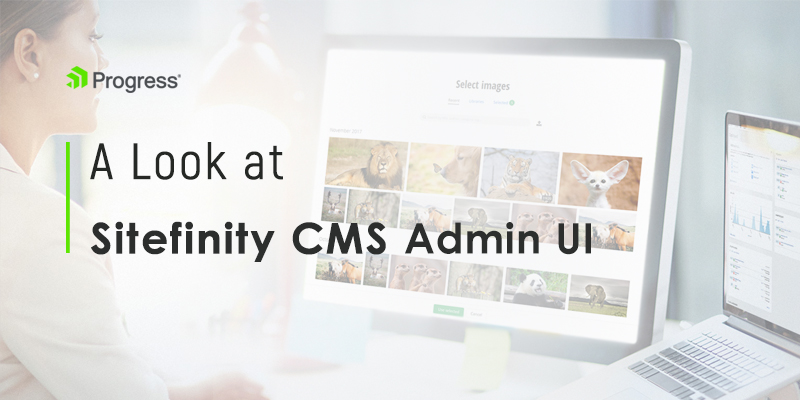
A Look at Sitefinity CMS Admin UI
Customer experience has become the core of all business in today’s market and the changing demands has forced organizations of all sizes to deliver highly optimized user experience quickly and effectively.
It is observed that many organizations still don’t have the technology flexible and robust enough to deliver personalized experience to their consumers. And the competition among businesses is not with the other service providers, but it is actually how great your customer experience was for your potential visitors.
Sitefinity web development has served various purposes and the admin UI (Backend) has in fact become more and more complex in trying to satisfy the needs of the content editors, IT people, backend developers, front end developers, campaign managers and etc.
In order to streamline the growing functionalities and features, the user groups are categorized accordingly and more targeted and fine-tuned context is provided for each of them. Even in the admin area, latest features have been released and there are various functionalities that are more technical and can create confusion for the users, who might not have any idea of what some of the options are actually meant for.
And this makes the learning curve for the non-technical staff very steep and of course difficult. So, in this blog while considering the issues, I will discuss the UI of the administrative area of Sitefinity CMS.
What Makes UI so Important in Sitefinity CMS?
With every new release of Sitefinity version, there are some significant changes that are introduced to the interface so that it enhances the user experience.
With rich functionalities been added to Sitefinity CMS over the past few years, the interface has gotten somewhat a little cluttered with varied components and this has made it very overwhelming for the content creators. A wide variety of elements often distract the users and also limits the writing space to a great extent.
The new Sitefinity UI hides all the redundant elements like additional functions, navigations, filters and many more to make more space for the content and each screen focuses on a single primary task which is content creation.
It is very important to offer good and high quality content to have a good engagement with your customers. But with huge amounts of content generated, it is a difficult task for the users to find exactly what they need in the ocean.
Having the right content served to your customers will help to enhance their experience and Sitefinity CMS takes care of it. And the Digital experience cloud makes the marketers successful as they can analyze the customer behavior through the journey.
All the secondary functions are now hidden under the sidebars and menus and are only available on demand. This helps to place the desired content on the center stage and enhance readability.
To gain simplicity, Sitefinity UI was transformed into modern day UI components where the visual hierarchy was created and rich interactions helped to increase productivity. Now the content editors could use new functionalities and contextual toolsets that created a spacious design and also accommodated more content.
How and Where is the UI Applied?
The Sitefinity team very well understands the fact that a sudden big change in the present user experience can lead to confusion and also hamper your productivity.
And this is why the new UI features in Sitefinity are introduced piece by piece and it was first enabled for the content creation in Blogs, dynamic content modules and News. The prime goal is to enhance the productivity during the content creation process and also make navigation fast and intuitive.
Also Read: How to Make Your Sitefinity Website 200 Times Faster?

